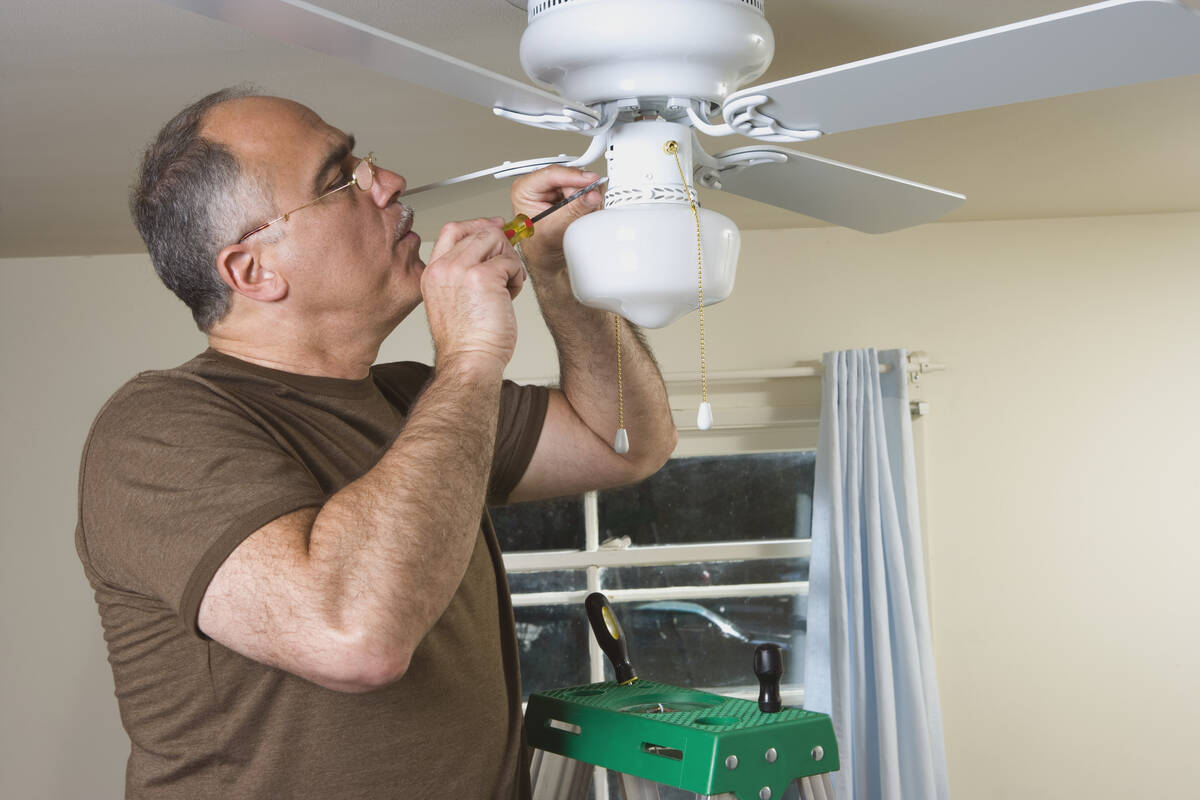Installing ceiling fan is straightforward

Q: My new home is prewired for a ceiling fan, which I am finally ready to install. Are there any precautions I should take?
A: You’ll be using a ladder, so I hope you have good balance. Beyond that, installation is straightforward.
Ceiling fans range in price from about $100 to several hundred dollars and take a little more than an hour to install. Most of this time is spent assembling the fan after taking it out of the box.
Since your home has been prewired, the builder should have installed a metal box with a brace bar between the ceiling joists to support the weight of the fan. If you were replacing a light fixture with a ceiling fan, which is typically heavier, you would need to install a brace bar so that the fan won’t fall.
Once you buy the fan, follow the manufacturer’s assembly instructions. With some fans, you attach the blades to the motor housing and then hang the completed fan (in which case you have to be a contortionist), while with others, you secure the motor to the ceiling first and then attach the blades.
Start by turning off the breaker in the main service panel, then test the wires to ensure the power is off.
All fans have a mounting bracket that attaches to the electrical box in the ceiling. Check that this bracket, which is secured with two screws, is tight to the box and the ceiling, or the fan will wobble when in use. The bracket should have a hook or a slot to support the weight of the fan while you make the electrical connections.
There should be two switches on the wall for the fan. One controls the fan, while the other controls the light kit attached to it. The function of the switches depends on how you wire the fan.
With the fan supported by the mounting bracket, pull out the wires from the ceiling. You’ll see a white wire (the neutral), black and red wires (the hot circuits), and a green or bare copper wire (the ground).
Separate the wires coming from the fan. There will be a black wire, a green wire, a white wire and a blue wire. Connect the green wire coming from the fan to the green or bare copper wire in the ceiling. Next, connect the white wires, then the black wires.
Finally, connect the red circuit wire to the blue fan wire (this connection runs the light kit). Use wire nuts (about $5 for a bag of 25) to make tight connections.
Now, you’re ready to attach the fan to the ceiling. This can be tricky because you may have to support the fan with one hand while screwing the housing to the mounting bracket with the other.
Lastly, connect the light kit to the bottom of the fan. Remove the small cover from the bottom of the fan and pull out the connection, which is a plastic fitting with wires coming from it that simply pushes into the mating fitting in the light kit.
If your fan has individual wires instead of this fitting, connect the individual wires from the fan to the wires in the light kit. Again, match the colors of the wires.
For homeowners who want to install a fan in place of a ceiling light, a brace bar will be needed to support the weight of the fan. Unfortunately, there will be only one switch on the wall to control power to the fan. In the past, if you wanted to operate the fan and the light individually, you would have to use the pull chain on the fan or pay for running an additional switch down the wall.
Nowadays, you can install a remote switch, which costs about $25 and is battery-operated. This unit hides inside the fan’s mounting bracket, and the switch can be fastened to the wall or stored like a TV remote. It takes just a few minutes to make the connections, and instructions are included.
Once the fan is wired and secured to the mounting bracket, turn the breaker back on and flip the wall switches.
If the fan wobbles, the blades are out of balance. This can be fixed with a fan balancing kit (about $2), which includes a clip that you’ll attach to the end of each blade. Turn on the fan after moving the clip from one blade to the next.
After deciding which blade makes the greatest difference in minimizing the wobble, move the clip down the length of the blade to determine where to place the permanent weight. This weight sticks to the top of the blade and can’t be seen.
Mike Klimek is a licensed contractor and owner of Las Vegas Handyman. Questions may be sent by email to handymanoflasvegas@msn.com. Or, mail to 4710 W. Dewey Drive, No. 100, Las Vegas, NV 89118. His web address is www.handymanoflasvegas.com.